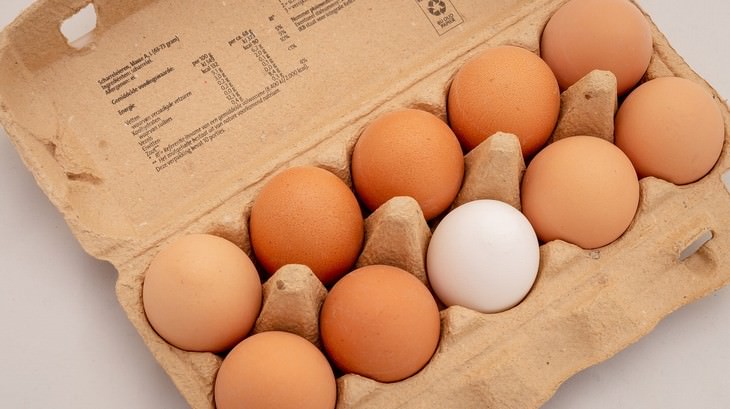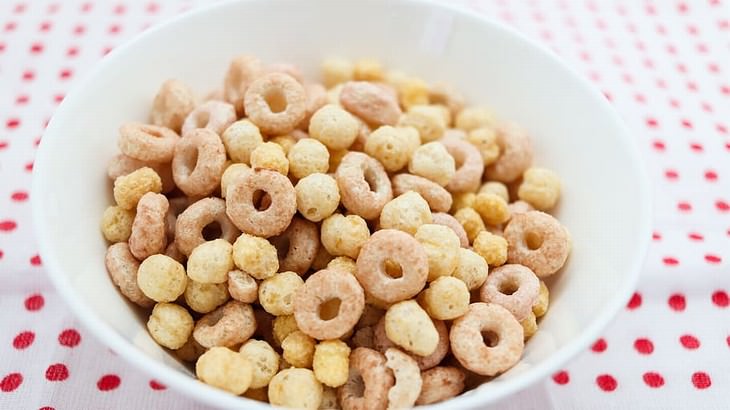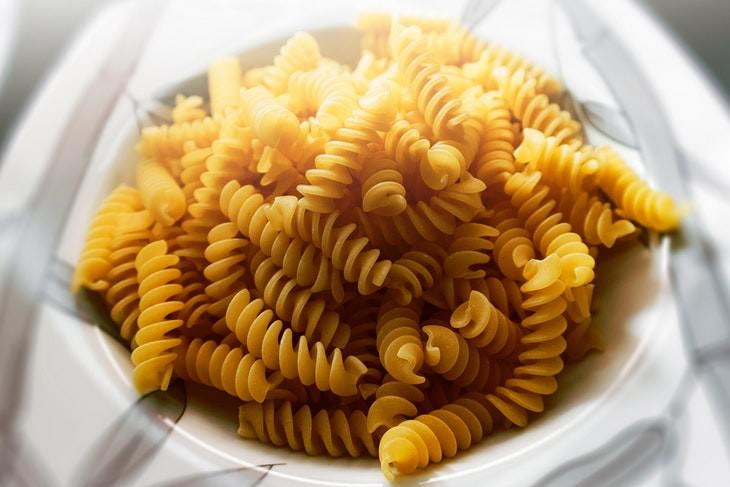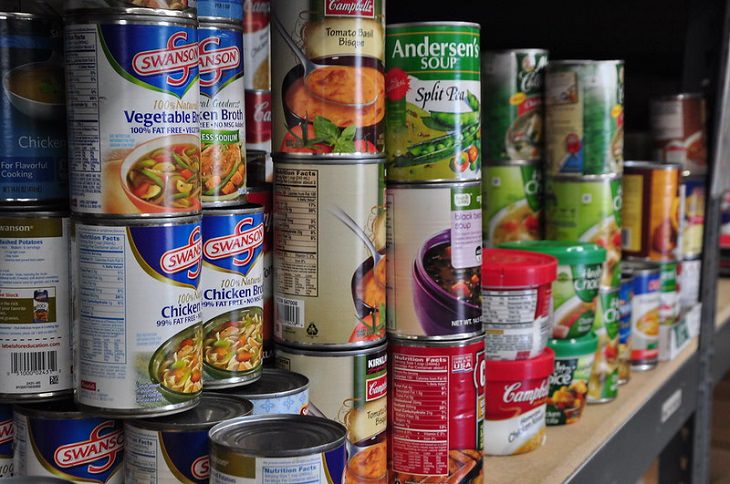The expiration date label is there for a
reason, but that reason might not always be what you think. While some
expiration dates are printed for the consumer to know when a certain
food should be disposed of, in other cases, the ‘sell by’ label on a
product is a marker of freshness and not its actual expiry. After all,
we often purchase foods with the intention of using them up over a
course of weeks, or sometimes months, and food producers and sellers
incorporate these dates to make sure your food gets to you as fresh as
possible.
This article explains what you need to know
about expiration dates and how, with certain foods, you can extend
their shelf life significantly and save a good amount of money. All 14
of these foods shouldn’t be tossed when they reach their expiration
date, and you’re about to find out why.
1. Meat and Fish
The "sell by" date that typically appears
on fresh fish and meat you buy in-store is printed on each package for
retailers or sellers to know when they should start pulling the product
from the shelves, but when it comes to the consumer, you don't have to
get rid of the expensive meat or fish once it reaches the date if you
make sure to freeze or refrigerate it.



Raw fish, chicken, and meat will last for
only 1-2 days after you purchased it if you keep it in the refrigerator.
But if you put it in the freezer, the shelf life can be extended for
months according to FoodSafety.gov, namely:
Poultry can be kept in the freezer up to 9 months if it's cut up
into pieces, and up to 12 months if whole.
Fish can be frozen for 6-9 months if bought fresh, but it can be
kept frozen up to 12 months if you purchased it frozen, sealed and it
didn't thaw while being transported.
Red meat can be stored upwards to 12 months in steaks, chops, and
roasts, and up to 4 months if it's ground up.
Similarly to raw meat and fish, the shelf life of smoked, cured, and
cooked products can be extended by 1-2 months if you freeze them, all
because freezing significantly slows down the process of oxidation and
the multiplication of harmful bacteria in foods.
2. Eggs 

Eggs are another one of those foods that are fine to eat after they have
passed the expiration date printed on the carton or egg. Irrespective
of this date, you are usually fine to use raw eggs for 3-5 weeks after
you've purchased them. If you're doubting the freshness of an egg,
simply crack it into a separate bowl before cooking or using in a recipe
- an egg that has gone off will have a strong sulfur smell that's
difficult to mistake for anything else.
Be mindful of the way you store eggs. If you bought eggs
un-refrigerated, storing them in the fridge is optional, but
refrigerated eggs should always be stored in the fridge.
3. Hard Cheeses

Unlike soft cheeses, such as cottage cheese, soft mozzarella or ricotta,
which should be tossed in accordance with the expiration label, most
hard cheeses are safe to eat for weeks past their expiration date. The
harder the cheese, the more fermented and the more resistant to bacteria
it is, which is exactly why aged cheeses, such as parmesan, can remain
unspoiled for months.
When it comes to determining whether or not a chunk of cheese is still
edible, your nose and eyes are your best tools. If the cheese smells
different than it used to, or if it starts growing mold from the middle,
it's best to part with it, but if it smells fine, and there is a little
mold growing on the side, simply cutting the faulty part off will still
leave you with perfectly fine cheese, since mold is naturally involved
in the production of hard cheeses anyway.
4. Cereal 

If there is one food that doesn't really have an expiry date, it's dry
breakfast cereals. The only catch is to keep the box sealed and
unopened, and you will be able to store a bag of cereal in the pantry
for 6-8 months. After that, the cereal can taste a bit off and become
stale, but even then, you won't get sick if you eat it.
This is because cereals are dry and processed foods, which makes them
among the easiest to store at room temperature. Needless to say, adding
milk or cooking it, e.g. preparing oatmeal, will require you to eat it
immediately, although oatmeal specifically can be stored for a few days
in the fridge.
5. Yogurt
Don't throw away an unopened jar or plastic container of yogurt just
because it reached its expiry date, these will still remain just as
tasty and healthy as they used to be for another 2-3 weeks. If you'd
like to extend its shelf life even further, you can also freeze it,
which will give you up to 2 months to use it up.
Once thawed, though, you'll have to use it up immediately. Needless to
say, any odd smell or presence of mold is a sign that you should part
with the yogurt, after all.
6. Nut Butters

Nut butters are another one of those foods that can be kept for months
even after you've opened them, irrespective of the expiration date.
Surely, it's best to purchase the freshest option in the store, as, with
time, the taste of nut butter will start to decline, but even these are
still safe to eat.
Both preservative-free nut butters and those that contain preservatives
have a long shelf life, but understandably, those that contain
preservatives will stay fresh for longer. It's best to store nut butters
in the fridge: natural nut butters can be stored up to 6 months past
the expiration date printed on the jar as long as they're unopened,
whereas an unopened jar of nut butter that contains preservatives will
be good for up to 12 months past the date.
Spreads that contain other ingredients, such as Nutella, for example,
have a shorter shelf life -these will last 1-2 months past the date on
the label.
7. Frozen Fruit and Vegetables

As mentioned previously, freezing prevents foods from spoiling, and this
is also true when it comes to frozen fruit and vegetables, which remain
safe to eat up to 10 months after the expiration date if the package
hasn't been opened. If you have opened the bag, however, try to use it
up as soon as you can, as the freezing can render parts of the fruit and
vegetables dry and hard, a phenomenon known as "freezer burn".
It has to be noted that foods affected by freezer burn are still safe to
eat, they're just not too tasty.
8. Chocolate

Chocolate is likewise very resilient, staying in tip-top shape for
months past it's printed expiration date. You should ideally keep the
chocolate at steady room temperature, though, as sudden changes in
temperature may cause some of the cocoa butter to liquefy and come to
the surface of the chocolate - a phenomenon known as "blooming" among
chocolate experts, which shouldn't be confused for mold. This type of
chocolate covered in a white film is still safe for you to eat, but the
bloom might sadly render the texture of the treat a bit less
pleasurable.
9. Some Condiments

You'd be absolutely in the right if you're keeping that bottle of
ketchup or mustard until you finish it or it starts smelling funny, as
these two, as well as relish and certain salad dressings, can remain
fresh and tasty for up to 6 months past their expiration date as long as
you keep them refrigerated.
The most resilient of the bunch is yellow mustard, which can remain
unspoiled for up to 2 years past its expiration label in the pantry if
left unopened, or up to a year in the fridge after opening.
10. Pasta

Let's be clear, we're not talking about cooked pasta, or the fresh
pasta, ravioli or gnocchi that are sold in the refrigerated section of
the supermarket, as all of those are intended for immediate use and
wouldn't last for 5 days past their expiration date. But when it comes
to dry pastas, their longevity is quite impressive, as these can be used
up even if their expiration date was a year or two ago as long as the
packaging seal hasn't been broken.
11. Chips and Crackers 

Like pasta, unopened bags of crackers, dry biscuits, even packaged
cookies, and potato chips will last for months past their expiration
date, so don't be afraid to munch on a long-forgotten bag of chips you
suddenly discover in the depths of your pantry.
Keep in mind that these will likely have a stale taste, which is fine as
long as you can tolerate the taste and they don't smell off. If we're
talking about an opened bag of treats, however, try to eat them within a
few weeks, as dry foods will pull humidity from the air and lose their
crunch quite fast.
12. Bread 

Despite the popular misconception, eating bread that's past its sell-by
date is absolutely fine as long as it doesn't grow any mold. This is
because the date seen on the packaging relates to room-temperature
storage, and it is possible to significantly extend the shelf life or
bread by simply putting it into the fridge. After all, the best french
toast is made precisely from second or third-day bread...
13. Canned Foods 

There is a reason why all those post-apocalyptic movies feature
underground shelters with tons of canned foods, and that reason is that
canning foods is among the best way of preserving it, be it soup,
vegetables, fruit, fish or meat. Most canned fruit and vegetables, with
the exception of highly acidic tomatoes and pineapples, will stay tasty
for up to a year past their expiration date.
But canned fish and meat are the true champions, as foods like spam and
canned tuna can be kept for an impressive 2-5 years past the date
printed on the can.
14. Milk
Like many other items on this list, milk comes in many varieties, and
the level of pasteurization and fat content both determine the shelf
life of the product. Skim milk will typically last for a week or so past
its expiration date, but whole milk and half and half will spoil more
quickly, in about five days past the printed date. Ultra-pasteurized
milk will remain drinkable for twice as long as pasteurized milk.
Checking whether the milk has turned is
quite easy - it will bunch up in small white curds and start smelling
sour, so simply pour the milk into an empty glass and check if you're
afraid it might have gone off. Also, make sure to keep milk refrigerated
at all times, even go as far as to move it to the back of the
refrigerator instead of the fridge door if you want to extend its shelf
life.